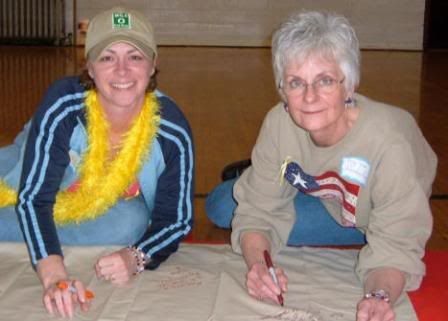Preparing and dyeing a Polypay fleece for processing...
First, I have to say *something* about my gross negligence to my blog. It's been nearly a year since I posted and man, that feels awful! All I can say is that the past year of my life has been kind of horrendous ~ I'm sure I'll catch everyone up on that as I go along with my regular posting again. But, that's not how I want to start right now :) I'd like to start again posting something useful and helpful (I hope!) by sharing my process for a current project and that is getting six pounds of clean polypay fleece ready to be sent in for processing.
I'm planning a variegated roving and will certainly share photos of it when I get it back this next week (it'll be for sale on my website) I've not worked with polypay before and got a decent bargain on ten pounds recently via the internet so thought I'd give it a try.

First, I had it washed at the mill where I work (Zeilinger Wool Co) and what was once 10 pounds is now six. It's fairly fine and was pretty greasy. And while the seller told me there was some VM, there was more than I like or expected. This photo is of the washed fleece. The tips didn't come completely clean, but I didn't expect them to. The staple length is OK...2.5-3" but, again, I prefer a bit more. This should work really well for the long draw woolen spinning method in the roving though :)
I talked to Jim (who runs the carding machines and does all the swirls and fancy rovings) at the mill about colors ~ how many, etc. It's best to have high contrast in a variegated roving (as opposed to a swirled roving, which you can see HERE) since there's a lot of blending going on :) So, I decided on charteuse, turquoise, deep violet and white). Then I weighed out one pound of clean fleece for each color, with 1.5 # for the white. You can't really see it but there's lots of VM in there folks!
I use a huge enameled pot for my dyeing and while it's quite large, it can still only handle about 12 oz of fleece comfortably. It's about 15" across and 8" tall. A taller pot might work better for vat dyeing solid colors, but I like this one for hot-pour too.
I start out by running hot tap water into the pot and I apply the powdered dye directly to that water and use a whisk to mix it. It's probably a better idea to paste the mix first with boiling water, but I wasn't worried about perfection with this stuff.
Then I submerge the dry fleece in there. I wouldn't do it this way if I were trying for a really solid color in roving or yarn (I would wet the fiber first and then heat the water a bit on the stove before adding the wet fiber and dye) but this is going to be picked and carded and blended together so some variation in color is fine by me. I let it soak in there while it's heating up and when I feel like the color has moved through the fiber, I'll add the acid (vinegar is what I normally use).
The polypay seemed to be a little more difficult to dye than some of the other fibers I've worked with. Part of it could be that there's still a bit of dirt in the fleece even after having it scoured and that makes it a bit harder to exhaust the dye....the polypay took about twice as long to exhaust as the merino laps I was dyeing at the same time. I let the fiber cool as well since the last remnants of dye will exhaust in the cooling process if the dyebath seems stubborn, as these did and I knew this wasn't because I was using too much dye....I used about 2 teaspoons of washfast acid to 12 oz of fiber, which is a little lighthanded according to most directions. I'm still a bit new at the dyeing for processing thing and I may need to use more dye to maintain the deeper colors in the carding ~ I'm not sure how much the white in the mix will affect the other colors yet.
 This is the charteuse after dyeing and then spinning out in the washing machine. It's hard to see all the VM in it, but there was still quite a bit. While the fleece was damp, I started teasing it by hand, and in the process, a lot of VM was shaken out. I also picked out the larger pieces as I went along. I'll grab a big handful and just start pulling at it, from one hand to the next, opening up the locks. This reveals the larger pieces for picking out and also causes a lot of the smaller stuff to fall out. I know that the picker at the mill will be doing the same thing but the less VM I send in, the better the end result will be.
This is the charteuse after dyeing and then spinning out in the washing machine. It's hard to see all the VM in it, but there was still quite a bit. While the fleece was damp, I started teasing it by hand, and in the process, a lot of VM was shaken out. I also picked out the larger pieces as I went along. I'll grab a big handful and just start pulling at it, from one hand to the next, opening up the locks. This reveals the larger pieces for picking out and also causes a lot of the smaller stuff to fall out. I know that the picker at the mill will be doing the same thing but the less VM I send in, the better the end result will be. 
This is what came out from just teasing and shaking the dyed fleece...the stuff I picked out by hand is in the green pile of fleece. It's really quite a bit!

And below is the fleece after all that teasing and picking ~ there's still some VM in there but I'm hoping that the picker and carder at the mill will remove most, if not all, of the rest.
I wish the photos showed how much VM was actually still in the fleece...much more than I expected there to be and while it's a bit of a pain in the butt, it can still be dealt  with if you want to take the time. Most people would just send it off like that, I guess, but I really don't want to offer customers a product I know I can improve by just spending a little extra time. I don't think it's FUN to hand tease and pick 3+ pounds of dyed fleece and I still have to do the same to the 1.5# of white that's going in with it but not tonight :) I started running out of steam working with the violet and it's not as well picked as the charteuse or turquoise but it looks pretty good.
with if you want to take the time. Most people would just send it off like that, I guess, but I really don't want to offer customers a product I know I can improve by just spending a little extra time. I don't think it's FUN to hand tease and pick 3+ pounds of dyed fleece and I still have to do the same to the 1.5# of white that's going in with it but not tonight :) I started running out of steam working with the violet and it's not as well picked as the charteuse or turquoise but it looks pretty good.
 with if you want to take the time. Most people would just send it off like that, I guess, but I really don't want to offer customers a product I know I can improve by just spending a little extra time. I don't think it's FUN to hand tease and pick 3+ pounds of dyed fleece and I still have to do the same to the 1.5# of white that's going in with it but not tonight :) I started running out of steam working with the violet and it's not as well picked as the charteuse or turquoise but it looks pretty good.
with if you want to take the time. Most people would just send it off like that, I guess, but I really don't want to offer customers a product I know I can improve by just spending a little extra time. I don't think it's FUN to hand tease and pick 3+ pounds of dyed fleece and I still have to do the same to the 1.5# of white that's going in with it but not tonight :) I started running out of steam working with the violet and it's not as well picked as the charteuse or turquoise but it looks pretty good. I hope that what I get back is worth the effort and if it isn't, well, I learned a lesson!
I'm a little nervous about how the polypay will card up since I've not worked with it before or had roving made from it. My concerns are the staple length and if it's fine enough to noil on me...it's really softer than I expected it to be and I think the roving will be nice even if there are a few noils in it.
I still have 28 ounces of clean polypay fleece to play with...I'll probably dye it and do my hand picking/teasing thing and sell it on the website for someone who wants a clean, dyed fleece to hand process :)
I played with some other new dyes today and had some disappointments with splitting in my new green dyes...sigh...I'm going to have to find out what I can do about it since I tried several different things and one in particular...Washfast Herb Green...split no matter what. Bummer, because what I can see of the color would be fantastic. I'm avoiding mixing my own colors at this point but I may not be able to avoid it much longer. I'll try and blog them this week if I'm not too frustrated with the whole thing! I did have good luck with the Moss Green and Pine Needle Green though, and the yellows worked out fairly well too ~ Lemon Drop, Mustard, and Gold Ochre ~ although the gold didn't dye very evenly, it didn't split on me but I think that's more of a problem with darker colors like the greens and the chocolate brown that I can't get to behave either!










2 Comments:
YAY! You're back! I used to read your blog all the time and wondered where you 'went' :-)
Welcome back!
We don't have Polypay down here in Australia but a friend in the US sent me some - I love fondling it!!
I'm glad you're back, too!
Post a Comment
<< Home